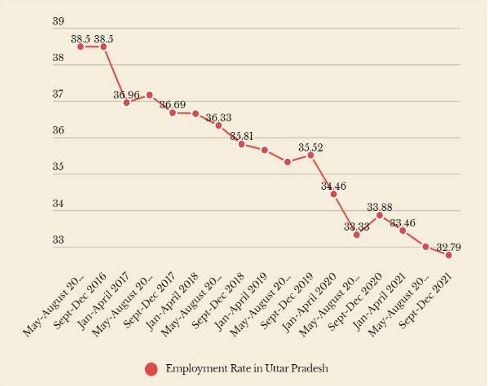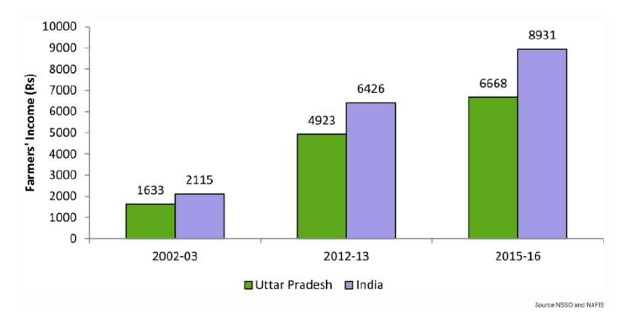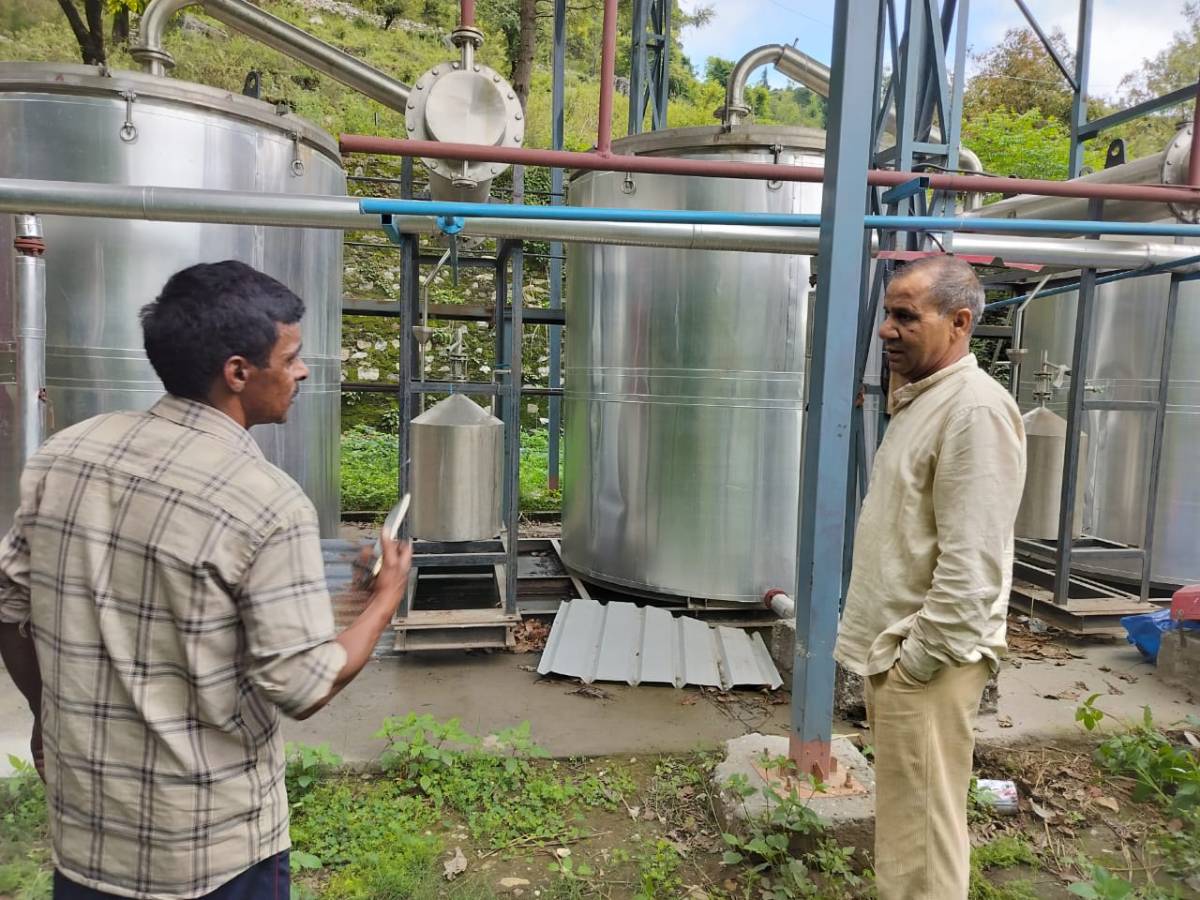Background
UP Chief Minister Yogi Adityanath has announced a mission to achieve a trillion-dollar economy goal for UP by 2027. After identifying nine sectors to focus on, he has put a dedicated team to chase the dream. The state’s current GDP is Rs 20 lakh crore (approx. 250 billion dollar) and it needs to cross Rs 80 lakh crore to meet the target of USD 1 trillion by 2027. Going by the current growth rate, the government is staring at a stiff challenge. How does he propose to do this? In a recent interview[1], he said
“The per capita income of Uttar Pradesh has grown almost 100% in the past 5-6 years. This was even though almost three years of this duration were consumed by Covid. In the previous financial year, our Gross State Domestic Product (GSDP) grew by over 20%, which is a positive step towards our goal. And now that we have identified the sectors to focus on – four core and five enabling – I think we are well on target. It should be achieved in the remaining period.”
“The state government’s revised estimates, in its analysis given with the annual budget for 2023-24, indicate that Uttar Pradesh’s GSDP has grown from ₹12.47 lakh crore in 2016-17 to ₹20.48 lakh crore in 2022-23. It is expected to grow to ₹24.39 lakh crore-in 2023-24.
Minister for finance Suresh Khanna, in his budget address (2023-2024) in the state legislative assembly, on February 22, 2023, said Uttar Pradesh’s GSDP grew 16.8% in 2021-2022. He said this was more than India’s growth rate and the GSDP is estimated to grow at 19% (at current prices) in 2023-24.
If U.P’s GSDP of ₹20.48 lakh crore is considered, the state will have to take its GSDP to ₹81.92 lakh crore in the next five years, which appears to be an ambitious target.”[2]
Professor Yashvir Tyagi, former head of department, Lucknow University says, “The required growth rate of GSDP would be 31.9% per annum which looks quite an ambitious target to achieve. UP’s economy has come out of the Corona pandemic-induced slowdown and is now on way to sustained growth. With buoyant investment and the spate of infrastructure projects, U.P. is poised to move forward on a path of accelerated development.
The compound annual growth rate of U.P.’s Gross State Domestic Product at current prices has been 8.28% during the period 2016-17 to 2021-22 as per data released by the Directorate of Economics and Statistics, GOUP (Government of Uttar Pradesh). However, the budget of the state government has put the size of GSDP in 2022-23 as ₹20.48 lakh crore and the projected GSDP for 2023-24 as 24.39 lakh crore. If these estimates are realised, this would imply that the GSDP at current prices would grow at an encouraging rate of 19.09% in the current year.”
“The state government, in its Request for Proposal (RFP) for the selection of a consultant (now appointed to draw roadmap to boost the GSDP trillion-dollar), had admitted that “the Herculean task demands some giant steps to be taken by the state government to move forward.””[3]
Enabling Factors
Uttar Pradesh Chief Minister Yogi Adityanath puts forth the works done on enabling investment ecosystem in the state, “We have made tremendous progress in terms of infrastructure. Roads, expressways, air and waterways, all have seen unprecedented growth in the past six years. The connectivity has pushed economic activities in a big way. UP is developing into a hub of multi-modal transport. Combined with the new freight corridors, the state will establish itself as an export hub.
Besides, the agriculture and MSME sectors are doing extremely well. At present, UP is exporting agri products worth Rs 19,000 crore per year. We will double it next year. We recently sent Landga mango and green chillies to Dubai and Doha. UP government is giving subsidy of 15% on cargo facility and the eastern region has already emerged as an agri export hub sending fresh vegetables to London via New Delhi and fresh mangoes to Dubai and London. Besides, fresh vegetables from Mirzapur, Ballia and other districts are being sent directly to Dubai, regional rice to Qatar and black rice to Australia. The state has enormous potential. It’s probably the only state in the country where 85-90% land is irrigated.
We have 96 lakh MSME units running in the state at present. Our One District One Product (ODOP) scheme is linked to the MSME sector, which has played a key role in over 100% growth in our overall export in the past five years. Our total export was approximately worth Rs 86,000 crore, which has grown to 1.75 lakh crore now. Besides, rapid urbanization has opened new doors to investment. Service sector has seen exponential growth. The arrival of 10 crore tourists to Varanasi, and 7 crore to Mathura-Vrindavan has given a fillip to the local trade. It has been made possible only because vastly improved facilities.”
Employment status in Uttar Pradesh
“Around 38% or 5.71 crore of the working-age population (14.82 crore) of the state in May-August 2016, was employed. This reduced in a year to 37.17% in May 2017-August 2017, which further slumped to 36.33% in 2018 and 35.34% in 2019, 33.33% in 2020 and 32.79% by the end of 2021.”1
The total number of people employed stayed over 5.6 crore up until the first quarter of 2020. Due to Covid-19 pandemic, many people in the state lost jobs and the number of those employed dropped to 5.49 crore in May 2020-August 2020. While the employment rate fell in the state, the rate of unemployment also dipped from 16.82% in mid-2016 to 4.83% by the end of 2021. As per Centre for Monitoring Indian Economy’s managing director and CEO Mahesh Vyas, this does not show a clear picture of the unemployment scenario. The state’s labour force participation rate has also reduced from 46.32% in mid-2016 to 34.45% at the end of 2021. Although UP’s working-age population has increased by over 2.2 crore – from 14.82 in 2016 to 17 crore in 2021, the total number of people employed has reduced by over 11 lakh.”[4]

Employment rate in Uttar Pradesh (2016-21)
Wages, Income and Poverty
“Approximately half of the Indian workforce is wage-employed. This is also true in the case of the workforce in Uttar Pradesh. Casual wage is a predominant from of wage employment, more so in rural areas. Nearly 40 per cent of the rural workforce was working as casual wage labour, whereas over 45 per cent of urban workers were working as regular wage/salaried workers in 2011-12 in Uttar Pradesh. It is also seen that dependence on casual wage work has been much higher in case of SCs as compared to other social groups such as ST and OBC (Papola and Mamgain, 2012). The existing segmentation in the labour markets on the lines of formal-informal, casual-regular, rural-urban, self-wage employment is again fragmented on the basis of social groups, social networks and discriminatory practices in hiring of labour (World Bank, 2011; Atwell and Madheswaran, 2010).
Average daily wages of casual wage labour were much lower in Uttar Pradesh than the national average, both for male and female labourers. In 2011-12, the average daily wage of a male casual labourer in the state was INR 135 in rural areas and INR 147 in urban areas. The aver- age wage of female casual labourers in rural Uttar Pradesh was almost 40 per cent lower than their male counterparts. Such differences in urban areas of the state were comparatively lower by 24 per cent. The gender-differentials in daily casual wage earnings were more pronounced in urban areas at the national level as compared to that in Uttar Pradesh as females earned a daily wage of less than 40 per cent of what their counterparts earned. ”[5]
Recent Developments towards Sustainability in Uttar Pradesh
Recently, Uttar Pradesh has made remarkable progress is sustainable developments. “The Amrit Sarovar Scheme, a government initiative, was launched on April 24, 2022 to provide clean drinking water to rural areas in the state. The scheme aims to ensure that every household in the state has access to safe drinking water as a part of source sustainability under Jal Jeevan Mission.
Jal Jeevan Mission was launched in 2019 by the Centre, aimed at providing functional household tap connections to all rural households by 2024. According to a report by the National Institution for Transforming India (NITI Aayog), Uttar Pradesh has made significant progress in the implementation of the Jal Jeevan Mission. As of March 2021, the state had provided tap connections to around 3.5 million households, which is about 21.2 per cent of the total rural households in the state.
Uttar Pradesh tops in country, with 10,858 lakes developed under Mission Amrit Sarovar, which is almost twice the total number of such lakes developed collectively in Madhya Pradesh, Jammu & Kashmir, Rajasthan and Tamil Nadu.[6]
Another scheme Jal Shakti Abhiyan – Catch the Rain Campaign was launched in 2019 to create rainwater harvesting structures suitable to the climatic conditions and subsoil strata, with people’s active participation, according to the status shared by the Union Ministry of Jal Shakti for the year 2021-23 for the number of work UP ranks 8 out of 36 states / UTs.
Another scheme, the Atal Bhujal Yojana (ATAL JAL), is being implemented in 8,562 Gram Panchayats of 80 districts in Gujarat, Haryana, Karnataka, Madhya Pradesh, Maharashtra, Rajasthan and Uttar Pradesh with an aim to improve community led sustainable groundwater management.
Under this scheme, Rs 7.69 crore was released for Uttar Pradesh for financial year 2020-21 and Rs 32.33 crore for FY 2021-22. The fund from the central government was for 550 Gram Panchayats in 26 blocks of 10 districts. Taking this initiative forward the state government has approved to implement this scheme in the remaining 65 districts which is not covered under the central plan under Uttar Pradesh Atal Bhujal Yojana (as reported in on 20 November 2020.)”[7]
Sectors critical to employment in Uttar Pradesh
The emphasis on employment generation in the state requisites an understanding of the sectors that are suited to yield higher employment vis a vis investment made. There are five key sectors that are intrinsic to a high growth economy and at the same time comprise a lion’s share of the total employment generated. These are
- Agriculture
- MSME Clusters
- High-Tech Manufacturing
- Construction
- Services
The following subsections details five such sectors, viz. Agriculture, MSME Clusters, High tech Manufacturing, Construction, and Services sector.
Agriculture
Uttar Pradesh is largely dominated by small and marginal farmers with 93% of agricultural households operating 65% of land. The average landholding size declined marginally from 0.76 ha in 2010–11 to 0.73 ha in 2015–16.
Agriculture is the main occupation in the state. According to the Situation Assessment of Agricultural Households (2012–13), UP had 18 million agricultural households, which accounted for 20% of the total agricultural households in rural India.

In 2012–13, the average monthly income per agricultural household was the fifth-lowest in Uttar Pradesh and stood at Rs. 4923; other states lower than UP were Bihar, Jharkhand, Uttarakhand and West Bengal. The situation worsened in 2015–16 and UP ranked last in farmers’ income (NABARD, Financial inclusion survey, 2018). According to this survey, the average monthly income per agricultural household stands at Rs. 6668, which is about 25% lower than the all India average of Rs. 8931 in 2015–16.

MSME Clusters
“As per, U.P. unorganized manufacturing survey of 2017, there are over 160,000 Micro Small and Medium Enterprises (MSMEs) enterprises in UP, 93% of which are single household entities. On an average the enterprises employed 8 people and in total they employed 1.3 million people. In total across all sectors there are 6.7 million enterprises in U.P. employing 13.75 million people in the state. Data indicates that the districts of Gautam Buddha Nagar, Agra, Meerut, Allahabad, Ghaziabad, Hardoi and Kanpur feature on the top in various key parameters such as number of enterprises, employment and output. Initiatives in these districts will impact more enterprises and workforce. On the other hand, clusters in Varanasi and Aligarh have a unique industrial heritage which can create a disproportionate impact of output as well as employment and must be supported with well targeted interventions.
Comprising of 14.20% (approx. 90 lakh) of MSMEs in the country, U.P. is emerging as the country’s next growth frontier with its large consumer base, rapidly improving physical infrastructure, abundant availability of manpower, and reform-oriented proactive governance. The policy environment and business climate of the state provides significant opportunities for entrepreneurs to create a global footprint. The state government has implemeted serval polcies including UP Industrial Invetsments and Employment Pormotion Policy 2017 (UPIIEPP), UP Micro, Small and Medium Enterpirse Promotion Policy 2017, One District-One Product Scheme (ODOP) and Food Processing Industry Policy-2017.
It is evident from the above information that the MSME sector serves as a backbone of manufacturing sector in Uttar Pradesh with the presence of many traditional clusters which includes agriculture, leather, handloom, handicrafts, etc. There are more than 40 lakhs MSMEs and providing more than 95 lakh employment opportunities in the state. But, due to increased competition, environmental regulations, requirement of technology upgradation and infrastructure requirements, MSMEs are struggling to see the growth and development in the state.”[8]
High tech manufacturing
Under the state government’s ‘UP Electronics Manufacturing Policy-2017, In three years, it has attracted investments of Rs 20,000 crore and generated employment for three lakh persons. Under the policy, Noida, Greater Noida and Yamuna Expressway have been declared as ‘Electronics Manufacturing Zones’
In view of the successful investment scenario in the sector, the government has now decided to revise the target to bring fresh investments of Rs 40,000 crore and further generate 4 lakh employment in the next five years till 2025. This would be done under a more advanced UP Electronic Manufacturing Policy-2020 brought in August 2020 which aims at developing the electronics sector in all parts of the state. Under the 2020 policy, three electronics manufacturing clusters, which include an electronic city near the Jewar Airport on Yamuna Expressway, a defence electronics manufacturing cluster in Bundelkhand, and a medical electronic manufacturing cluster in the Lucknow-Unnao-Kanpur zone, are proposed to be established.
High tech manufacturing is considered one of the most promising short to medium term mass employer. Moreover, there’s high demand for female workforce among electronics manufacturing. “Women’s participation in formal manufacturing jobs has stagnated at 20 per cent for the past two decades, according to the Annual Survey of Industries 2019-20. Besides, the 1.6 million women of the eight million people employed in formal factory jobs are also likely to be working in a handful of industries such as textiles, apparel, tobacco, leather and food products. However, the data only looks at formal and permanent jobs, while a lot of factory jobs are largely contractual.
But India’s electronics manufacturing industry is proving to be a silver lining. Recruiters say there is an increasing demand for women at EMS factories and consumer electronic brands, with several upcoming factories specifically asking to hire women for assembly roles. “We have a mandate to hire 40,000 female employees for the electronics sector (for 2023). A lot of electronics manufacturing is shifting from China and Taiwan to Indian cities after the pandemic. Looking at the success of leading electronics manufacturing companies in hiring women factory workers in India, others are also looking to do the same,” says Alok Kumar, Senior Director-Global Accounts and Sales, Manpower, a subsidiary of workforce solutions company ManpowerGroup.
The trend is crystallising particularly in regions within Tamil Nadu, Uttar Pradesh, Karnataka and Maharashtra as the states have set their sights on becoming trillion-dollar economies each and are positioning themselves as electronics manufacturing hubs.”[9]
Construction sector
Under the Building and Other Construction Workers Welfare Board set up by the government, Uttar Pradesh has 65,92,852 registered workers. “For a landlocked state such as Uttar Pradesh, access to gateways (such as inland container depots, ports, etc.) which link production centers within the state to key domestic and international markets is essential to link in with global value chains, and boost export growth. For a growing economy with a large geographical spread, logistics planning and cost optimization through better transport infrastructure become critical to remain competitive in domestic and global markets…. Uttar Pradesh has a strong spinal network of highways and expressways, it still needs additional investment in last-mile rail and road connectivity. Logistics and storage facilities, ranging from inland container depots, to warehouses and cold storage facilities, require decongestion, improved connectivity to industrial estates and technology upgrades.”[10]
Construction sector is expected to drive formal employment increase through investments in infrastructure. There are opportunities in key areas of road development (spinal expressways and last-mile connectivity), followed by urban services (drainage, sewerage, and sanitation), railways, airports, logistics (multimodal parks), power (transmission and distribution), and industrial park infrastructure.
Services sector
The penetration of key services like education, health and banking in the state remain limited to some regions and urban centres. Moreover, the IT sector that employs at large scale is also limited to NCR region. In every subsector, the population of the state is underserviced. The government plans to invest in broadening both reach and scope of the services ,it is expected to drive employment at a larges scale.
“For decades, the higher education system of Uttar Pradesh (UP) has been waiting to witness reforms because it has its own set of challenges: High density of population, diverse demographics and inadequate investment, especially from the private sector.”[11] There are slew of changes that aim to broaden reach of education services throughout the state following the adoption of New Education Policy 2020.
In healthcare, “according to a state government spokesman, the health department is equalising the ratio of doctors and nurses in the next two years through creation of more posts for nurses. Currently, the doctors far outnumber nurses in the state as the sanctioned posts for the latter is half compared to that of doctors. The sanctioned posts for doctors as well as nurses stand at 19,011 and 9,569, respectively.
The state government plans to build world-class hospitals on international and interstate borders so that people on both sides of the borders can benefit from them. The government plans to build seven 50-bedded hospitals in Lucknow, Gorakhpur and Ghaziabad districts, in addition to 25 primary health centres in Varanasi, Ghazipur, Meerut and Mirzapur, as well as 23 community health facilities in Gorakhpur, Pratapgarh and Ghazipur.”[12]
IT sector, The government has set a target to increase IT’s share in GSDP from Rs 56,548.4 crore ($6.93 billion) to a whopping Rs 6,03,840 crore ($74 billion) in the next five years. IT cities will be set up in four districts of the state namely Paschimchal, Madhyaanchal, Purvanchal and Bundelkhand. These IT cities will be developed by private developers in an area of 100 acres. For this, the government will give a 25 per cent subsidy on capital investment, with a maximum limit of Rs 100 crore. Similarly, IT Park will be developed on five acres with a 25 per cent subsidy to be given on the investment of Rs 20 crore. Besides, a 100 per cent rebate in stamp duty will be given on the purchase of land in both these schemes.”[13]
Conclusion
While there has been growth in GSDP in Uttar Pradesh, it has largely come through capital intensive manufacturing and high-end services sectors that is limited to western edge of the state. At the same time, there has been a considerable decline in employment levels in recent years. The burgeoning working age population of the state and declining employment levels present a double challenge for the policymakers, that is chronic large-scale and long-term livelihood related migration. The current and future investments (public and private) to be made in efforts to increase economic output of the state needs to be inclusive and growth oriented, wherein there are enough decent jobs.
References:
[1]https://scroll.in/article/1016036/in-charts-employment-rate-has-fallen-in-up-uttarakhand-goa-and-punjab-since-the-last-polls
[2] https://www.hindustantimes.com/cities/lucknow-news/319-gsdp-growth-required-to-fuel-uttar-pradesh-economy-s-four-fold-increase-101692300075933.html
[3] https://www.hindustantimes.com/cities/lucknow-news/319-gsdp-growth-required-to-fuel-uttar-pradesh-economy-s-four-fold-increase-101692300075933.html
[4] https://scroll.in/article/1016036/in-charts-employment-rate-has-fallen-in-up-uttarakhand-goa-and-punjab-since-the-last-polls
[5] https://www.ilo.org/wcmsp5/groups/public/—asia/—ro-bangkok/—sro-new_delhi/documents/publication/wcms_614693.pdf
[6] https://www.downtoearth.org.in/blog/water/how-uttar-pradesh-is-moving-towards-water-sustainability-89979
[7] https://www.downtoearth.org.in/blog/water/how-uttar-pradesh-is-moving-towards-water-sustainability-89979
[8] https://msme.icai.org/wp-content/uploads/2021/06/UP-MSME-Policy.pdf
[9] https://www.businesstoday.in/interactive/longread/here-s-why-electronics-factories-are-hiring-more-and-more-female-employees-246-10-03-2023
[10] https://www.adb.org/sites/default/files/publication/550751/inclusive-growth-uttar-pradesh.pdf
[11] https://www.hindustantimes.com/opinion/rejuvenating-up-s-education-sector-101675780741097.html
[12] https://www.business-standard.com/article/current-affairs/up-set-to-transform-health-sector-in-2-years-under-adityanath-govt-122050300391_1.html
[13] https://theprint.in/india/uttar-pradesh-government-seeks-to-increase-it-sectors-contribution-to-gsdp-from-6-93bn-to-74bn-in-5-years/1207345/








